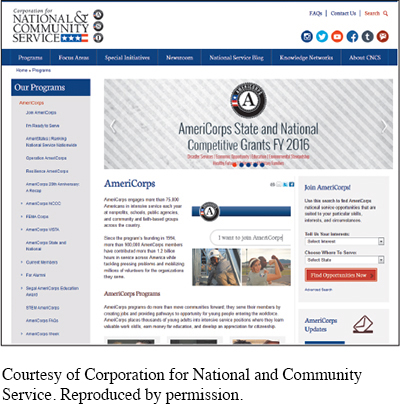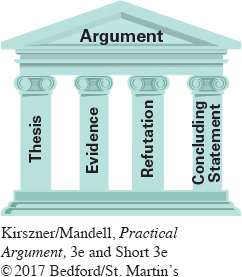Steele, An Argument in Support of the “Gap Year”
EXERCISE 6.6
The following oral argument was presented by a student in a speech course in response to the assignment, “Argue for or against the advantages of a ‘gap year’ between high school and college.” (Her PowerPoint slides appear at the end of the speech.) After you read this argument, answer the questions that follow, consulting the outline on the previous page if necessary.
AN ARGUMENT IN SUPPORT OF THE “GAP YEAR”
CHANTEE STEELE
1
Thesis statement
College: even the word sounded wonderful when I was in high school. Everyone told me it would be the best time of my life. They told me that I would take courses in exciting new subjects and that I’d make lifelong friends. [Show slide 1.] What they didn’t tell me was that I would be anxious, confused, and uncertain about my major and about my future. Although this is only my second year in college, I’ve already changed my major once, and to be honest, I’m still not sure I’ve made the right decision. But during the process of changing majors, my adviser gave me some reading material that included information about a “gap year.” A gap year is a year off between high school and college when students focus on work or community service and learn about themselves—
2
Evidence: Point 1 in support of thesis
[Show slide 3.] Apparently I’m not alone in my uncertainty about my major or about my future. As Holly Bull, a professional gap-
Page 215
3
Evidence: Point 2 in support of thesis
The gap year gives students many options to explore before going to college. [Show slide 4.] This slide shows just some of the resources students can use as they prepare for their gap year. As you can see, they can explore opportunities for employment, education, and volunteer work. There are even resources for students who are undecided. As David Lesesne, the dean of admissions at Sewanee, says, “Some students do very interesting and enriching things: hike the Appalachian Trail, herd sheep in Crete, play in a rock band, [or even] attend school in Guatemala” (qtd. in Wood 37). Many other students, especially in these economic hard times, use the gap year to earn money to offset the high cost of their education (Wood 35).
4
Evidence: Point 3 in support of thesis
Taking a gap year can also help students to get into better colleges. According to an article by the dean of admissions at Harvard, “Occasionally students are admitted to Harvard or other colleges in part because they accomplished something unusual during a year off” (Fitzsimmons, McGrath, and Ducey). Depending on the scope of their service or work, a gap year could enable students to earn scholarships that they were not eligible for before. In fact, some colleges actually recommend that students take time off after high school. Harvard is one of several U.S. colleges that “encourages admitted students to defer enrollment for one year to travel, pursue a special project or activity, work, or spend time in another meaningful way” (Fitzsimmons, McGrath, and Ducey). Furthermore, evidence shows that a gap year can help students to be more successful after they begin in college. One Middlebury College admissions officer has calculated that “a single gap semester was the strongest predictor of academic success at his school” (Bull 7). Given this support for the gap year and given the resources that are now available to help students plan it, the negative attitudes about it in the United States are beginning to change.
Page 216
5
Refutation of opposing arguments
In spite of these benefits, parental concerns about “slackerdom” and money are common. Supporters of the gap year acknowledge that students have to be motivated to make the most of their experiences. Clearly, the gap year is not for everyone. For example, students who are not self-
6
Concluding statement
After considering the benefits of a gap year, I have concluded that more students should postpone college for a year. Many students (like me) are uncertain about their goals. We welcome new opportunities and are eager to learn from new experiences and may find a year of service both emotionally and intellectually rewarding. Given another year to mature, many of us would return to school with a greater sense of purpose, focus, and clarity. In some cases, the gap year could actually help us get into better schools and possibly get more financial aid. If we intend to take the college experience seriously, spending a gap year learning about our interests and abilities would help us to become better, more confident, and ultimately more focused students. [Show slide 6.]
7
Are there any questions?
Works Cited
Bull, Holly. “Navigating a Gap Year.” TeenLife, Feb. 2011, pp. 6–
Fitzsimmons, William, et al. “Time Out or Burn Out for the Next Generation.” Harvard College Office of Admissions, 2011, college.harvard.edu/
Wood, Christina. “Should You Take a ‘Gap Year’?” Careers and Colleges, Fall 2007, pp. 36–
Page 217

Page 218


Page 219


Page 220
Identifying the Elements of an Oral Argument

Where does this oral argument include verbal signals to help guide readers?
Does this oral argument use simple, direct language? What sections of the speech, if any, could be made simpler?
Where does this oral argument repeat key information for emphasis? Is there any other information that you think should have been repeated?
What opposing arguments does the speaker identify? Does she refute them convincingly?
How effective are the visuals that accompany the text of this oral argument? Are there enough visuals? Are they placed correctly? What other information do you think could have been displayed in a visual?
What questions would you ask this speaker at the end of her speech?
